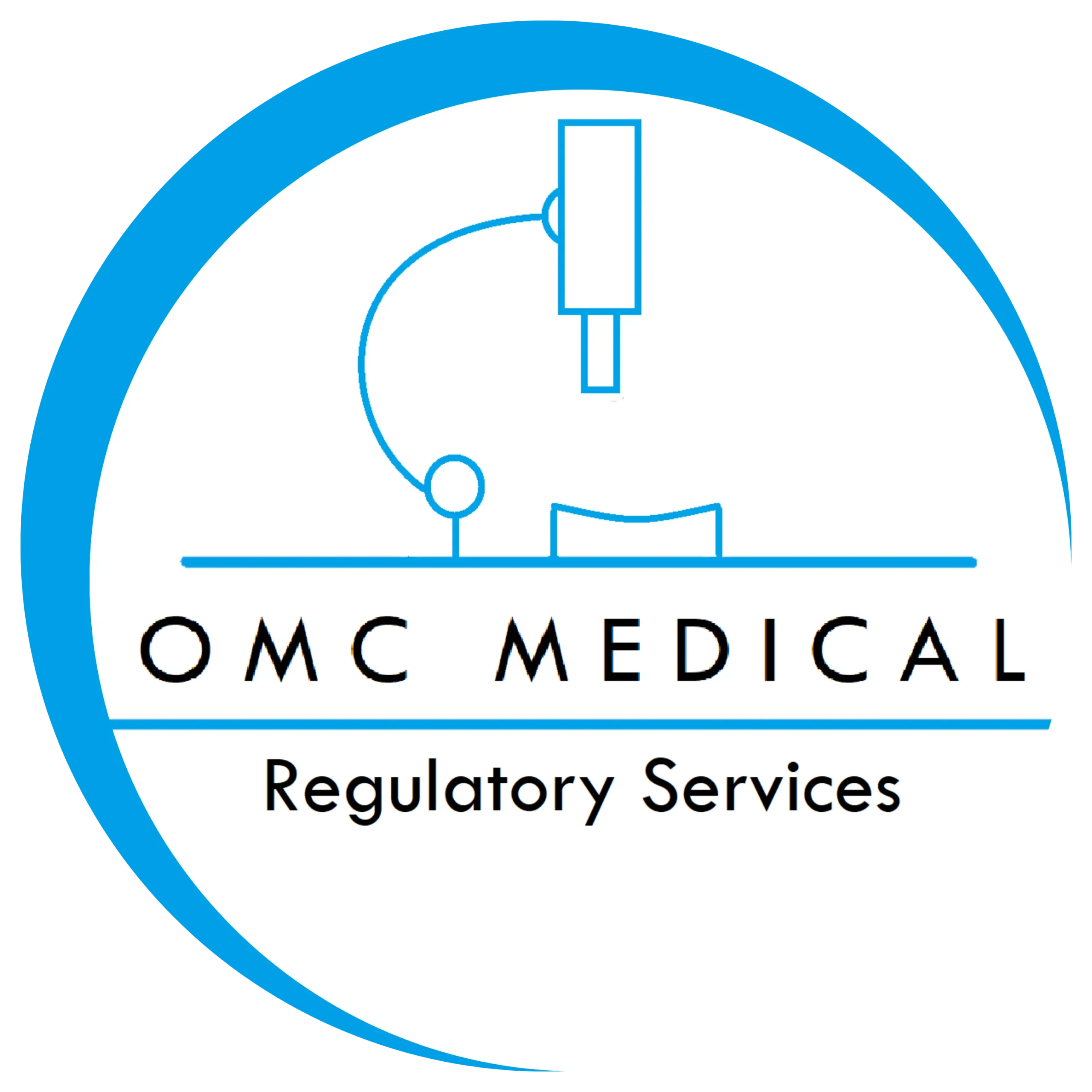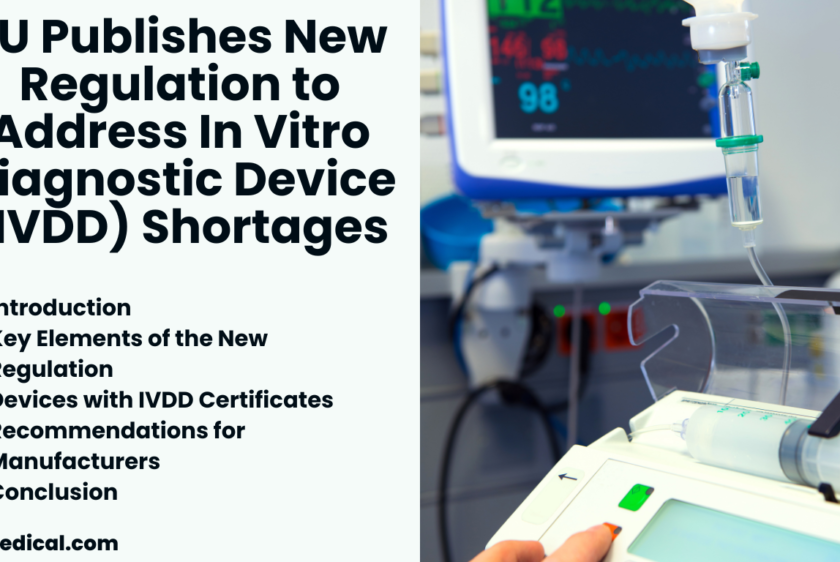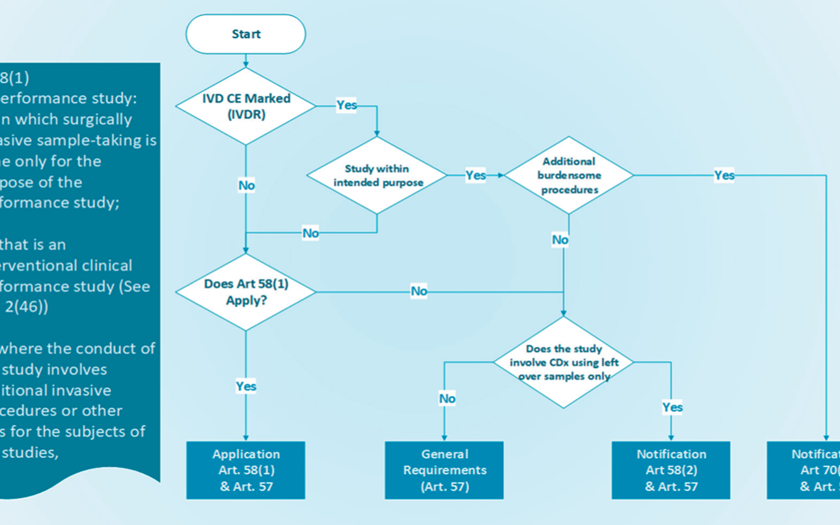News
On July 9, 2024, Regulation (EU) 2024/1860 was published in the Official Journal of the European Union (OJEU) and took effect immediately. This new regulation aims to address the expected shortages of in vitro diagnostic medical devices (IVDs) in the EU due to the slower-than-expected transition from the In Vitro Diagnostic Directive (IVDD) to the In Vitro Diagnostic Regulation (IVDR). Following the removal of the sell-off provisions in Article 110.4, made official with Regulation (EU) 202...
September Newsletter
EU REGULATIONS The expert panel in the field of in vitro diagnostic medical devices now accepts submissions from notified bodies for the Performance Evaluation Consultation Procedure | 03 September 2021 Regulations EU MDR 2017/745 on Medical Devices and EU IVDR 2017/746 on In Vitro Diagnostic Medical Devices contain important improvements among which stricter control for high-risk devices is implemented via a new pre-market scrutiny mechanism, reinforcement of the rules on clinical evidence...
October Newsletter
EU REGULATIONS The expert panel in the field of in vitro diagnostic medical devices now accepts submissions from notified bodies for the Performance Evaluation Consultation Procedure | 14 October 2021 To prevent disruption in the supply of these essential healthcare products, the European Commission has proposed a progressive roll-out of the new In Vitro Diagnostic Medical Devices Regulation introducing substantial changes in the regulatory framework for in vitro diagnostic medical devices, such...
December Newsletter
EU REGULATIONS MDCG 2022-4 – Guidance on appropriate surveillance regarding the transitional provisions under Article 120 of the MDR | 16 February 2022 Article 120(2) and 120(3) of the Medical Device Regulation (EU) 2017/745 (MDR) state s that devices which are covered by valid certificates issued by a notified body under the Active Implantable Medical Devices Directive 90/385/EEC (AIMDD), or the Medical Devices Directive 93/42/EEC (MDD) may be placed on the market or put into servic...
January Newsletter 2022
January Newsletter – EU Regulations MDCG 2022-1: Notice to 3rd country manufacturers of SARS-CoV-2 In vitro diagnostic medical devices | 12 January 2022 This notice is addressed to manufacturers of In-Vitro Diagnostic medical devices (IVDs) with the intended purpose to detect and/or quantify markers of SARS-CoV-2 infection1 who are based in countries outside the EU or the EEA and who place or intend to place the abovementioned devices on the EU market. It is intended to highlight a n...
February Newsletter 2022
February Newsletter: EU REGULATIONS MDCG 2022-4 – Guidance on appropriate surveillance regarding the transitional provisions under Article 120 of the MDR | 16 February 2022 (February Newsletter 2022) Article 120(2) and 120(3) of the Medical Device Regulation (EU) 2017/745 (MDR) state s that devices which are covered by valid certificates issued by a notified body under the Active Implantable Medical Devices Directive 90/385/EEC (AIMDD), or the Medical Devices Dire...
March Newsletter
AUSTRALIA March Newsletter: Consumer/Patient information materials requirements | 02 March 2022 On 26 October 2017, the Australian government passed laws requiring implanted and active implantable medical devices to include patient information materials (patient information booklets and patient implant cards). More flexibility in information delivery was introduced by providing electronic formats. Manufacturers of all implanted devices in the ARTG (Australian Register of Therapeutic Goods),...
April Newsletter
AUSTRALIA Transitioning to the new Therapeutic Goods Advertising Code | 05 April 2022 The Therapeutic Goods Administration (TGA) is updating advertisers on the transitional arrangements for the 2021 Advertising Code, particularly regarding hard copy ad stock. On January 1, 2022, the Therapeutic Goods (Therapeutic Goods Advertising Code) Instrument 2021 (2021 Code) went into effect. The Therapeutic Goods Advertising Code (No. 2) 2018 is repealed and replaced by the 2021 Code (2018 Code). Advertis...
May Newsletter 2022
EUROPEAN UNION (EU) Stricter rules for placing medical tests on the market | 25 May 2022 From 26 May 2022, new laws for in vitro diagnostic medical devices (IVDR) such as HIV testing, pregnancy tests, and COVID-19 tests are in effect. The guidelines will improve public health and patient safety for these devices, putting EU law in line with technological advancements and medical research progress. It also ensures equitable market access for manufacturers by unifying market access standards acros...










